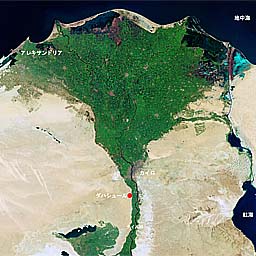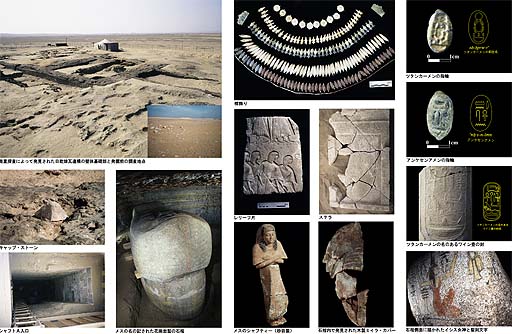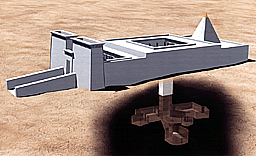A Study for the Pyramid Exploration Utilizing Satellite Data Analysis and
the Discovery of Ancient Egyptian Remains
The pyramids which represent funeral complexes of ancient Egypt were built in the desert area of the Nile west bank between the Old Kingdom period and the Middle Kingdom period. Studying pyramids is one of the important subjects in Egyptology. However there are a lot of riddles on the pyramids and even the purpose of construction if it is king's tomb or not is still uncertain. On the other hand, it is reasonable to suppose that there still remain undiscovered pyramids in this area, because there are at least three kings such as Menkauhor (5th dynasty), Neferkare (7-8th dynasty), and Ity (9-10 dynasty) whose pyramids are missing although there is a possibility of the pyramid building. If we can find their pyramids in the original state, the purpose of construction and many other unsolved riddles on the pyramids could be revealed.
By the new archaeological study utilizing satellite data, previously unknown ancient Egyptian remains were detected in the desert area of the Nile west bank. Tokai University Research & Information Center (TRIC) has been carrying out pyramids exploration using satellite data in cooperation with the Institute of Egyptology, Waseda University since 1994, and in the first phase of the study, we have discovered an extremely large cemetery of the New Kingdom in the desert area located approximately 30km south of Cairo. The site was named " Dahshur North" , and the excavation was began in March, 1996. The most conspicuous discovery was a mud brick construction, which was supposed to be a tomb-chapel (shrine type tomb for nobles) of the New Kingdom period with the scale of 47m in length, comparable with the largest example of Horemheb at Saqqara. Although it was not pyramid, a limestone pyramidion (cap stone) about 60cm in the height considered to be placed at the top of the tomb-chapel was unearthed.The shaft and the several underground chambers were also revealed in the center court of the mud brick construction. Two doorways to seven underground chambers appeared at the bottom where it measured approximately 13m from the floor level of the court, and besides an innermost underground chamber with a huge granite sarcophagus and a great number of relics were found. The excavation work is still continuing, and a new construction with the maxmum scale pyramidion was additionally unearthed from the sorrounding area of the mud brick construction in the 8th excavation of 2002.
This discovery is the first example in the history of Egyptology that the site was pinpointed by the satellite data analysis and a successful excavation followed, and it proves that satellite data is useful in archaeological observation in the desert area as well as being a clue for the pyramid exploration in the next stage.

Satellite image of the study area
●=Detected site
LANDSAT/TM ©TRIC

Satellite image of Dahshur North(
○=site area)
KVR-1000 ©TRIC/Sovinformsputnik

The site of Dahshur North pinpointed by satellite image analysis
Photo: Ohmura

The mud brick construction and findings
Photo: The Institute of Egyptology, Waseds University

A restoration of the tomb-chapel by Nishimoto& NHK-CG






